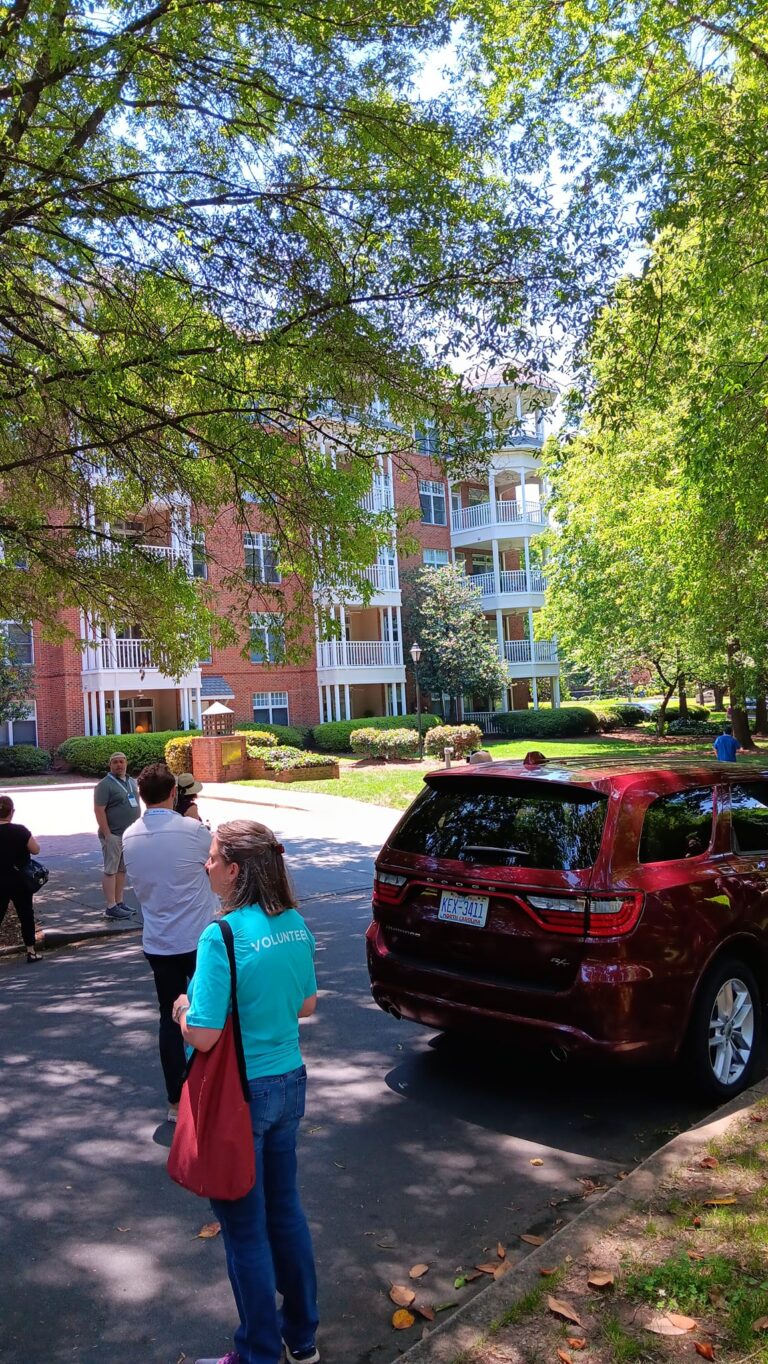Physical Address
304 North Cardinal St.
Dorchester Center, MA 02124
Physical Address
304 North Cardinal St.
Dorchester Center, MA 02124
In Escaping the Housing Trap, Charles Marohn and Daniel Herriges address the role of zoning in creating the housing crisis. Like some other recent books (most notably by Nolan Gray and Bryan Caplan) this book shows how zoning limits housing supply and thus has led to our current housing crisis. But unlike Gray and Caplan, Marohn and Herriges focus on modest, politically feasible reforms rather than on the benefits of total deregulation. Like other authors, Marohn and Herriges discuss the history of downzoning. For example, in Somerville, Mass., a middle-class suburb of Boston with 80,000 residents, only 22 houses conform to the city’s own zoning code. And in San Francisco, 54 percent of homes are in buildings that could not legally be built today. In Manhattan, 40 percent of buildings are nonconforming. Why? Because zoning has become steadily more restrictive over time, making new housing difficult to build. Where development occurs, it is in a tiny fraction of the region’s neighborhoods- usually, either at the outermost fringe of suburbia or in a few dense urban neighborhoods. For example, in Hennepin County, Minnesota (Minneapolis and its inner suburbs) 75 percent of all housing units built between 2014 and 2019 were in 11 percent of the county’s neighborhoods. In Cuyahoga County, Ohio (Cleveland and its inner suburbs) 75 percent of housing units were built in under 5 percent of the county’s neighborhoods. Marohn and Herriges also critique some anti-housing arguments. For example, one common argument is that only public housing is useful, because the very poor will never be served by the market. They correctly respond that even if there will always be some people in need of government assistance, adequate housing supply will reduce that number. They write that housing policy “will look very different in a situation where the market […]

A 2017 increase in allowed floor area ratio in Mumbai had a tremendous impact on affordability by accidentally improving the economics of smaller apartments.
Two law professors, Joshua Braver of Wisconsin and Ilya Somin of George Mason, are coming out with an article suggesting that exclusionary zoning (by which they mean, rules such as apartment bans and minimum lot sizes that are designed to exclude people less affluent than an area’s current residents) violate the Takings Clause of the U.S. Constitution. Rather than focusing solely on originalist interpretations of the clause and on policy-oriented “living Constitution” theories, the authors rely on both theories. Under a living Constitution view, they argue that zoning unfairly disfavors vulnerable minorities (anyone who cannot afford to live in a place under current zoning), unfairly limit individual autonomy by limiting the right to move to a new neighborhood, and creates an oligarchy of elite homeowners. From an originalist perspective, the authors argue that the Takings Clause was intended to protect “a right to use [property], not merely a right against physical seizure by the state.” The authors admit that this right is not absolute, but is limited by the police power of the state. However, the authors cite some early treatises suggesting that the police power is limited to truly dangerous activities, as opposed to merely unpopular land uses such as apartments.

A friend asked what are the best papers supporting land use liberalization. That’s a broad question, but here are some of my answers. Affordability The basic case for zoning reform, across the political spectrum, is that the rent is too damn high. Michael Manville, Michael Lens, and Paavo Monkkonen give a combative and accessible review of the evidence in their Urban Studies paper (2020). The principal drawback is that it is rapidly becoming dated, as evidence and research come in from more recent reforms. The most important of those may be Auckland’s, which Ryan Greenaway-McGrevy has reported in a few papers, including this Economic Policy Center working paper (2023). Using a synthetic control method (which is not perfect, to be sure), Greenaway-McGrevy finds that upzoned areas had 21 to 33 percentage points less rent growth. A new candidate for the best review of the evidence on zoning reform and affordability is Vicki Been, Ingrid Gould Ellen, and Katherine M. O’Regan’s late 2023 working paper, “Supply Skepticism Revisited.” Racial integration Many authors from different disciplines have shown that both the intent and effect of zoning as practiced in the U.S. were racist and classist. That is, zoning policies have separated people by race, homeownership status, and income more than would have occurred in an unregulated market. Allison Shertzer, Tate Twinam, and Randall Walsh’s review of the evidence in Regional Science and Urban Economics (2022) is concise and helpful. However, fewer authors have attempted to show that removing specific zoning restrictions reduces existing patterns of segregation. One is Edward Goetz, in Urban Affairs Review (2021). He makes a qualitative argument. I’m unaware of a good causal, quantitative paper showing how broad upzoning impacts local integration (but I would happily commission it if anyone wants to write it!) Environment & climate Along some […]
By Andrew Crouch and Charles Gardner In March 2023, Arlington County, Virginia passed an amendment to its zoning ordinance which legalized so-called “missing middle” housing typologies in several residential districts, including many which had been zoned for single-family homes. Ten local homeowners filed suit in Arlington County Circuit Court in April 2023, alleging among other things that the proper procedure for amending the ordinance was not followed and the zoning change should be invalidated. The County Board and Planning Commission, the defendants in the lawsuit, fired back, alleging a fatal lack of standing and claims that, if they were true, could not and should not be resolved by the circuit court. During proceedings held on October 19, 2023, Judge David Schell delivered a win to the plaintiffs, ruling that they have demonstrated standing by virtue of being within the rezoned area and that the case against Arlington County’s missing middle zoning ordinance amendment therefore may proceed to trial. Initial trial proceedings are scheduled for November 16, 2023. Judge Schell also ruled in favor of the defendants on a separate issue, holding that one of the plaintiffs’ seven claims, alleging a violation of the Virginia Freedom of Information Act (VFOIA), should be dismissed. With respect to standing, Judge Schell ruled that the claims made by the homeowners, if true and presented in the most favorable light, were justiciable and ripe for relief, and that the homeowners had standing to challenge a general zoning ordinance. The latter holding may set precedent, as the cases presented to the court by the parties did not address the issue of standing in the context of an ordinance-level, district-wide zoning change. In their 162-page complaint, plaintiffs claim entitlement to sue on the basis that the ordinance “will result in a higher tax assessment,” although this appears […]
In a recent report from the Georgia Public Policy Foundation, Chris Denson and J. Thomas Perdue compile the strictest minimum lot size regulations and minimum home size regulations from a range of cities and counties in Georgia. 31 of Georgia’s 159 counties mandate minimum lot sizes (in unincorporated land, on some districts) larger than 1 acre, with minimums as high as 5 acres in two southwestern Georgia counties. Charting local zoning in America is no small task, and Denson and Perdue give a valuable snapshot of one of its facets in a big and growing state. Georgia is not known for onerous regulation of homebuilding – when I volunteered with Abundant Housing LA, a fellow volunteer who’d moved from Georgia would shame liberal NIMBYs by saying how much easier it was to get apartments permitted in her conservative home state – but like much of the US, Georgia’s home construction has failed to meet the growing demand. Denson and Perdue spotlight one specific regulatory tool more typical of Georgia than elsewhere: minimum home size regulations (as distinct from minimum lot size regulations, which are ubiquitous nationwide). Denson and Perdue show that Georgia counties and county seats often require minimum home sizes far in excess of American Society of Planning Officials benchmarks, and point out this drives up housing costs significantly. Below is a map (made in ArcGIS by my colleague Micah Perry) of Denson and Perdue’s data on county government minimum home sizes, showing the highest minimum in any zone on unincorporated land for counties for which data was available: The clear lesson from Georgia’s surprisingly strict regulations is that policymakers in growing Sun Belt cities and states shouldn’t delude themselves: the crises afflicting coastal “superstar” cities are coming for them too if they don’t liberalize land use laws. Austin […]

One common NIMBY* argument is that new housing (or the wrong kind of new housing) will “destroy the neighborhood.” For example, one suburban town’s politicians fought zoning reform in New York by claiming that allowing multifamily housing “is a direct assault on the suburbs.“ Indeed, many people do seem to believe that apartments and houses are somehow incompatible. But I saw an interesting counterexample recently. A couple of weeks ago, I attended the CNU (Congress for the New Urbanism) conference in Charlotte, North Carolina. CNU usually sponsors neighborhood tours, and I toured Myers Park, one of the city’s richest neighborhoods. Myers Park was built in the 1910s; most blocks are dominated by large single-family houses with an enormous tree canopy. Although Myers Park is only a couple of miles from downtown Charlotte, it certainly looks suburban, if by “suburban” you mean low-density and dominated by houses. (According to city-data.com, the neighborhood density is just below 4000 people per square mile, less than that of affluent Long Island suburbs like Great Neck and Cedarhurst). And yet on one of the neighborhood’s major streets (Queens Road) apartments and houses seemed to alternate. This does not seem to have reduced home values; the average value of detached homes there is over $1 million, about four times the statewide average. Moreover, Myers Park apartments are not the sort of “missing middle” housing that is virtually indistinguishable from a house. I saw a five-story building in Myers Park: not a skyscraper but definitely not something that looks like its neighbors. Not far away is a four-story building that looks like it has a few dozen units. In other words, apartments and houses can coexist, even in places that are very suburban in many ways. *As many readers of this blog probably know, NIMBY is an […]
A group of researchers at the Urban Institute came out with a new study on zoning and housing affordability. At governing.com, a headline about the study screamed: “Zoning Changes Have Small Impact on Housing Supply.” The Governing writer’s spin was, of course, “there’s no evidence it [upzoning] makes housing cheaper.” Governing has published numerous articles that criticize pro-supply zoning reform (one of which I critiqued on this blog), so this conclusion seems to fit in with its general point of view. The most important conclusion (to me) of the study is that it reinforces the commonsense view that lower housing supply leads to higher costs. In particular, the study concludes: “Reforms tightening regulations are associated with increased rents, potentially worsening conditions for low- and moderate-income renters.” (page 4, emphasis mine). What about upzonings (reforms that allowed more construction)? The study concludes that they “lead to a 0.8 percent increase in housing supply, on average.” (p. 28). How small is 0.8 percent? In fast-growing Harris County, Texas (Houston and its inner ring suburbs), 17 percent of the county’s 1.885 million units have been built since 2010, or about 1.7 percent per year. So 0.8 percent increase would be only five or six months’ worth of new housing in Houston- not a huge amount. Given the miniscule amount of reform the lack of impact on housing prices should hardly be surprising. In other words, if zoning allows six months’ worth of new housing (compared to the pre-reform status quo), things stop getting worse but don’t really get better. If zoning allows less housing, things get worse.
In recent years, I have thought of Herbert Hoover as sort of an urban policy villian, thanks to his promotion of zoning. But I recently ran across one of his memoirs in our school’s library. (Hoover’s memoirs were a multivolume set, and this particular volume related to his service as Secretary of Commerce and President). Hoover devotes less than a page zoning, noting that it was designed “to protect home owners from business and factory encroachment into residential areas.” He doesn’t mention the parts of zoning that have stunted housing supply in recent decades, such as the prohibition of apartments in homeowner zones, and minimum lot sizes. In fact, he brags about increases in housing construction when he was Secretary of Commerce, writing that “The period of 1922-28 showed an increase in detached homes and in better apartments unparalleled in American history prior to that time.” In particular, he notes that 449,000 dwelling units were built in 1921, and that this number rose to 753,000 in 1928. He claims some of the credit for this, primarily because the Commerce Department helped formulate a standard building code which he believed would be less costly than existing local codes, and because the Department sought to lower interest rates on second mortgages. One common argument against new housing is that because some new housing has been built, therefore there has been a building boom sufficient to meet demand. By contrast, Hoover was not a believer in the idea that any housing construction equals enough housing construction; he notes that “The normal minimum need of the country to replace worn-out or destroyed dwellings and to provide for increased population was estimated by the Department at 400,000-500,000 dwelling units per annum.”* *By the way you might be wondering how these numbers compare to current levels […]
During the Trump Administration, liberals sometimes criticized conservatives for being anti-anti-Trump: that is, not directly championing Trump’s more obnoxious behaviour, but devoting their energies to criticizing people who criticized him. Similarly, I’ve seen some articles recently that were anti-anti-NIMBY*: they acknowledge the need for new housing, but they try to split the difference by focusing their fire on YIMBYs.** A recent article in Governing, by Aaron Renn, is an example of this genre. Renn agrees with “building more densely in popular areas like San Francisco and the north side of Chicago, in other cities along commercial corridors, near commuter rail stops, and in suburban town centers.” Since I am all for these things, I suspect I agree with Renn far more than I disagree. But then he complains that YIMBYs “have much bigger aims” because they “want to totally eliminate any housing for exclusively single-family districts- everywhere.” What’s wrong with that? First, he says (correctly) that this would require state preemption of local zoning. And this is bad, he says, because it “would completely upend this country’s traditional approach to land use.” Here, Renn is overlooking most of American history: zoning didn’t exist for roughly the first century and a half of American history, and in some places has become far more restrictive over the last few decades. Thus, YIMBY policies are not a upending of tradition, but a return to a tradition that was destroyed in the middle and late 20th century. To the extent state preemption gives Americans more rights to build more type of housing, it would actually recreate the earlier tradition that was wiped out. Moreover, even if the status quo was a “tradition”, that doesn’t make it the best policy for the 21st century. For most of the 20th century, housing was far cheaper than […]